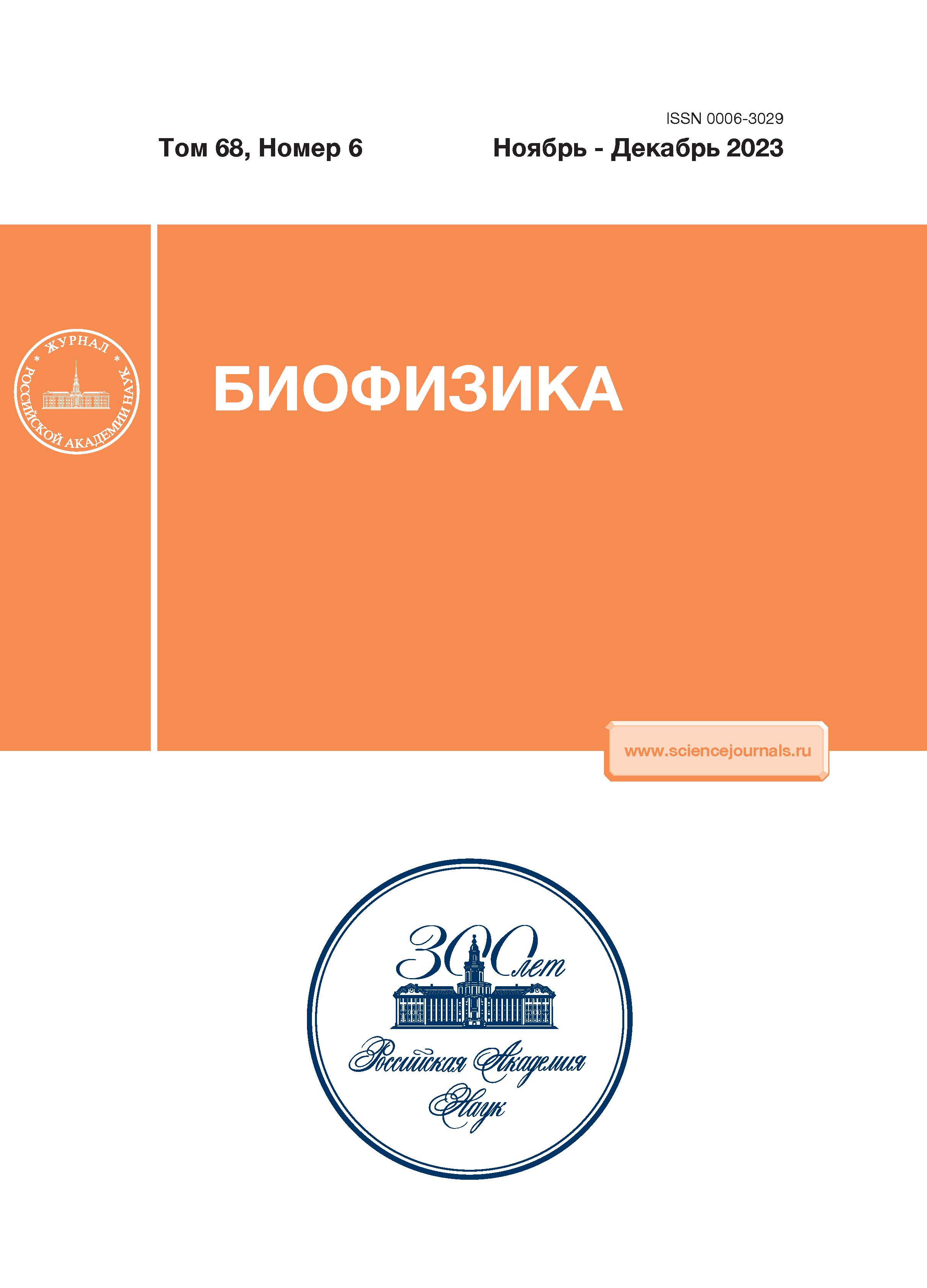Analysis of the relationship between the activity of the reticular formation of the medulla oblongata, respiratory and cardiovascular systems in rats under painful stimulation
- Autores: Dick O.E1
-
Afiliações:
- I.P. Pavlov Institute of Physiology, Russian Academy of Sciences
- Edição: Volume 68, Nº 6 (2023)
- Páginas: 1220-1228
- Seção: Articles
- URL: https://cardiosomatics.ru/0006-3029/article/view/673247
- DOI: https://doi.org/10.31857/S0006302923060133
- EDN: https://elibrary.ru/RPFSEB
- ID: 673247
Citar
Texto integral
Resumo
Using the method for calculating the average of conditional probabilities of recurrence intervals, a comparative analysis was performed to estimate the direction of coupling between different physiological rhythms in the form of fluctuations in blood pressure, respiration, and the activity of neurons in the reticular formation of the medulla oblongata in two groups of anesthetized rats under pain stimulation or no stimulus. It was found that there are different kinds of the directions of coupling between the analyzed rhythms. Most of the data obtained for rats from the control group and rats with experimentally induced colitis suggest the statistically significant unidirectionality of coupling. Painful stimulation did not affect the direction of coupling, but the amount of data on unidirectionaity of coupling slightly reduced. At the same time, the rhythms associated with the cardiovascular system (blood pressure variability) were controlled by the rhythms of the respiratory system, and the respiratory rhythm controlled the variability of the activity of neurons in the reticular formation of the medulla oblongata.
Palavras-chave
Sobre autores
O. Dick
I.P. Pavlov Institute of Physiology, Russian Academy of Sciences
Email: dickviola@gmail.com
St. Petersburg, Russia
Bibliografia
- M. C. Romano, M. Thiel, J. Kurths, et al., Europhys. Lett., 71, 466 (2005). doi: 10.1209/epl/i2005-10095-1
- J. Kurths, M. C. Romano, M. Thiel, et al., Nonlinear Dynam., 44, 135 (2006). doi: 10.1007/s11071-006-1957-x
- M. C. Romano, M. Thiel, J. Kurths, and C. Grebogi, Phys Rev E, 76, 036211-1 (2007). doi: 10.1103/Phys-RevE.76.036211
- D. Rangaprakash and N. Pradhan, Biomed. Signal. Proces. Control., 11, 114 (2014). doi: 10.1016/j.bspc.2014.02.012
- O. E. Dick and A. L. Glazov, Neurocomputing, 455, 163 (2021). doi: 10.1016/j.neucom.2021.05.038
- O. E. Dick and A. L. Glazov, Tech. Phys., 67 (2), 48 (2022). doi: 10.1134/S1063784222010030
- A. R. Kiselev, S. A. Mironov, A. S. Karavaev, et al., Physiol. Meas., 37 (4), 580 (2016). doi: 10.1088/09673334/37/4/580
- V. S. Khorev, J. M. Ishbulatov, E. E. Lapsheva, et al., Information and Control Systems, 1, 42 (2018). doi: 10.15217/issn1684-8853.2018.1.42
- T. E. Dick, Y. H. Hsieh, R. R. Dhingra, et al., Prog. Brain Res., 209, 191 (2014). doi: 10.1016/B978-0-444-63274-6.00010-2
- Y. Shiogai, A. Stefanovska, and P. V. E. McClintock, Phys. Reports, 488, 51 (2010). doi: 10.1016/j.phys-rep.2009.12.003
- D. Hoyer, U. Leder, H. Hoyer, et al., Med. Eng. Phys., 24, 33 (2002). doi: 10.1016/S1350-4533(01)00120-5
- A. S. Karavaev, M. D. Prokhorov, V. I. Ponomarenko, et al., Chaos, 19, 033112-1 (2009). doi: 10.1063/1.3187794
- O. A. Lyubashina, A. A. Mikhalkin, and I. B. Sivachenko, Integrat. Physiol., 2 (1), 78 (2021). doi: 10.33910/2687- 1270-2021-2-1-71-78
- O. A. Lyubashina, I. B. Sivachenko, and A. A. Mikhalkin, Brain Res. Bull., 182, 2 (2022). doi: 10.1016/j.brainresbull.2022.02.002
- L. Faes, G. Nollo, and K. Chon, Ann. Biomed. Eng., 36, 381 (2008). doi: 10.1007/s10439-008-9441-z
- M. G. Rosenblum and A. S. Pikovsky, Phys. Rev. E, 64, 045202-1 (2001). doi: 10.1103/PhysRevE.64.045202
- N. Marwan, Y. Zou, N. Wessel, et al., Phil. Trans. Roy. Soc. A, 371, 20110624-1 (2013). doi: 10.1098/rsta. 2011.0624
- N. Marwan, M. C. Romano, M. Thiel, and J. Kurths, Phys. Reports, 438, 237 (2007). doi: 10.1016/j.phys-rep.2006.11.001
- F. Takens, In Dynamical Systems and Turbulence, Lecture Notes in Mathematics, Ed. by D. Rand and L. S. Young, (Springer-Verlag. Berlin, 1981), V. 898, pp. 366-381.
- M. B. Kennel, R. Brown, and H. D. Abarbanel, Phys. Rev. A, 45, 3403 (1992).
- A. M. Fraser and H. L. Swinney, Phys. Rev., 33, 1134 (1986).
- M. Thiel, M. C. Romano, J. Kurths, et al., Phil. Trans. Roy. Soc. A, 366, 545 (2008).
- P. R. Bevington and D. K. Robinson, In Data reduction and error analysis for the physical sciences, Third ed. (McGraw_Hill Higher Education, 2003), p. 338.
- V. I. Ponomarenko, M. D. Prokhorov, A. B. Bespyatov, et al., Chaos, Solitons and Fractals, 23, 1429 (2005).
- M. G. Rosenblum, L. Cimponeriu, A. Bezerianos, et al., Phys. Rev. E, 65, 041909-1 (2002). doi: 10.1103/PhysRevE.65.041909
- R. Mrowka, L. Cimponeriu, A. Patzak, and M. G. Rosenblum, Amer. J. Physiol. Regulatory, Integrative Comp. Physiol., 285 (6), 1395 (2003). doi: 10.1152/ajpregu.00373.2003
- A. J. Ocon, M. S. Medow, I. Taneja, and J. M. Stewart, Am. J. Physiol. Heart Circ. Physiol., 300, 527 (2011). doi: 10.1152/ajpheart.00257.2010
- A. Stefanovska, H. Haken, P. V. E. McClintock, et al., Phys. Rev. Lett., 85 (22), 4831 (2000). doi: 10.1103/PhysRevLett.85.4831
Arquivos suplementares










